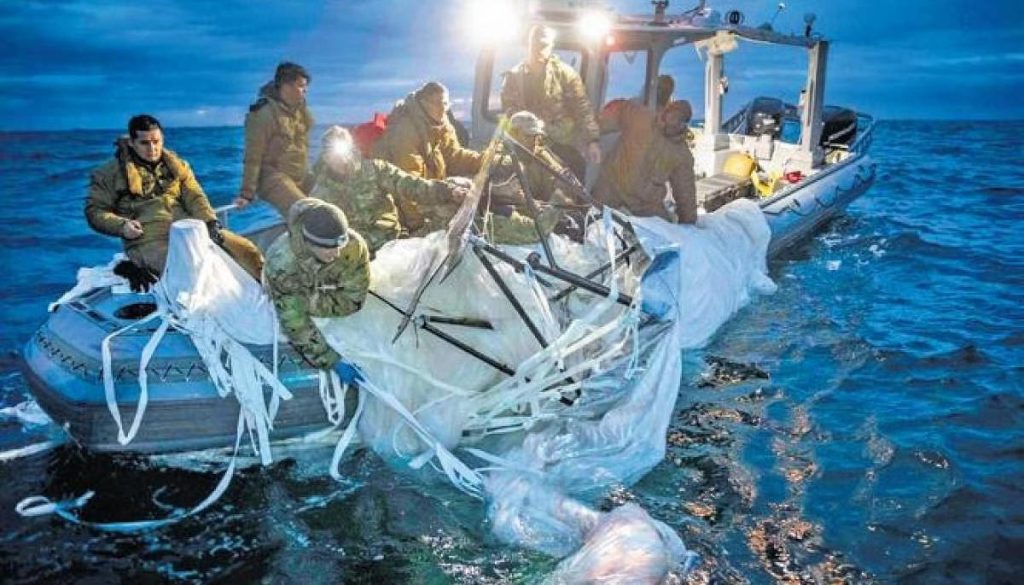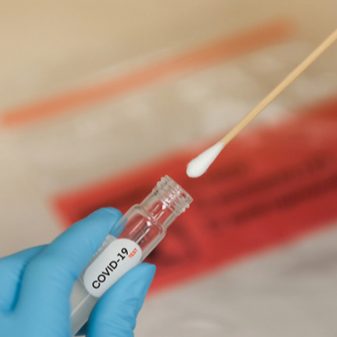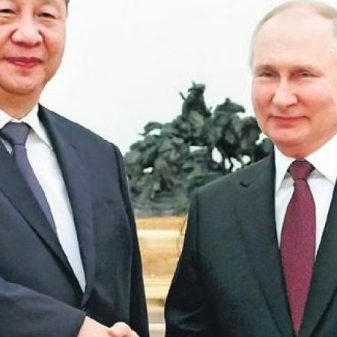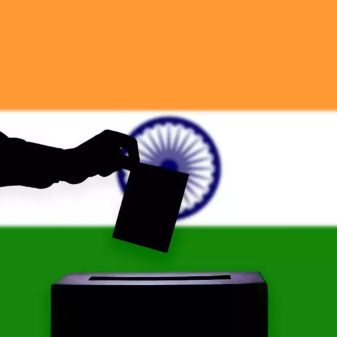
Kajal Basu
The balloon’s original surveillance target was likely Guam, but the weather skewed the balloon northward.
The last month has seen an unprecedented fiasco centred on the US response to purported Chinese gossage spying on the continental US. After days spent stoking public and media hysteria about an intelligence-level intrusion, the US shot down a 200-ft-tall “unidentified anomalous phenomenon” (UAP) that the Chinese called a weather balloon knocked off course by errant winds, and the US insisted was a spy aerostat.
US President Joe Biden ensured that the Chinese high-altitude balloon (HAB) was shot down in Top Gun style by an F-22 on live television. This wasn’t just about geopolitics. It was also about primetime entertainment to build a Hollywoodian narrative about a stealthy, omniscient enemy. In quick succession, the US shot down three more balloons under the apprehension that they, too, were Chinese spy balloons.
Turns out that they were not. One was K9YO, a picoballoon—a polyester Mylar balloon measuring less than a metre in diameter and utterly harmless—belonging to the Northern Illinois Bottlecap Balloon Brigade (NIBBB). Another was cylindrical—possibly an advertising or announcement dirigible, a corporate or sports blimp that might have come untethered. (Only 25 of these semi-rigid blimps are still in existence, and about half are used for advertising.) Yet another was an octagonal object with strings hanging off it. None of these had discernible payloads and was not transmitting communications signals.
The head of the US North American Aerospace Defense Command (NORAD) and Northern Command said on record that he wasn’t ruling out alien spacecraft, UFOs, “or anything else”. Later, of course, with the North American UFO community suddenly sitting bolt upright after a deep sleep and the American Right-wing cackling derisively like Mephistopheles, the Biden administration hurried to deny any theories about alien incursions.
The intelligence community’s “current assessment”, said an insufficiently mortified President Biden, was that three balloons were “most likely balloons tied to private companies, recreation or research institutions studying weather or conducting other scientific research”.
The US intelligence community now holds that even the first balloon, which lifted off from Hainan on China’s southern coast, did not intend to travel over the continental US but was blown off its path by strong winds. The balloon’s original surveillance target was likely Guam, but the weather skewed the balloon northward.
There were enough indications that targeting the three balloons was a botch. Despite being small, picoballoons, which are shiny and extremely reflective, light up radars. Launched by amateurs and with featherweight hobby payloads, they criss-cross the US mainland all the time. In effect, the US military shot down a tiny, GPS-tracked hobby balloon worth $12 with a Sidewinder missile costing $439,000. All four balloons were brought down by AIM-9X Sidewinders. That’s a total of $1.8 million. No, wait. One missile missed the Chinese forager. That’s five Sidewinders for $2.2 million, four of them wasted. That the US security apparatus was not able to distinguish a simple picoballoon from a spying aerostat has astonished the intelligence community worldwide. The Biden administration then said that the three smaller balloons, hovering at 20,000–40,000 feet, had been shot down because they endangered commercial airliner traffic. However, the Chinese bloat bag was pootling around at 60,000 feet, endangering nothing at all.
The US government’s serial statements do not make much sense except, perhaps, to the rarefied, spaced-out world of hyper security. Some flotsam from the Chinese balloon has been collected from a choppy, shallow, 11-sq-km debris field. Still, nothing is forthcoming about what the debris says about the nature of the balloon, aside from the insistence that they indicate espionage. The other three balloons remain unidentified: the search for their odds and ends has been called off.
The US’ National Weather Service launches about 60,000 high-altitude balloons, some rising to 32 km or far higher than the four balloons so coldbloodedly executed. It releases two a day from 900 locations around the world, 92 of them in the US. The balloons reach high altitudes of 30 km and can drift 200 km.
The Chinese balloon was shot down at the height of 18 km over Alaska, with the maximum number of weather-balloon launchpads in the US. NASA has launched extended data-gathering missions upwards of 1,700 giant gasbags—10–15 each year worldwide—larger than football stadia with ceilings of up to 37 km and 3.6 tonne payloads.
As the New York Times says: “The United States is not alone in its frequent use of balloons. Many of the 193 member states and territories of the World Meteorological Organization, based in Geneva, regularly send up stratospheric balloons in large numbers, some designed for long-term missions that collect data from around the globe.”
So, could it be that this event, an American misadventure by the yardstick, is being dragged out not because it has natsec value but is meant to keep Sino-US tensions unrelentingly high? Or is it a case of a more mundane bureaucratic power struggle?
In July 2022, the Department of Defense (DoD) formed the All-domain Anomaly Resolution Office (AARO) to begin analysing, identifying and reporting “unidentified anomalous phenomena” (UAPs)—anything unidentifiable in space, the air or sea that might pose a military threat.
Six months after it was set up to micro-search the skies, did AARO, a relatively new office within the DoD, overreach? After all, according to the AARO director, it works with “the military departments and the Joint Staff to normalise, integrate and expand UAP reporting beyond the aviators—to all service members—including mariners, submariners and our space Guardians”.
Soon after the bulk of the dust settled into diplomatic grousing, Biden seems to have turned his attention inwards to interagency scrabbling. “We don’t have any evidence of a sudden increase in the number of objects in the sky. We’re now just seeing more of them partially because of the steps we’ve taken to increase our radars, to narrow our radars.”
(The writer is a Veteran journalist)





